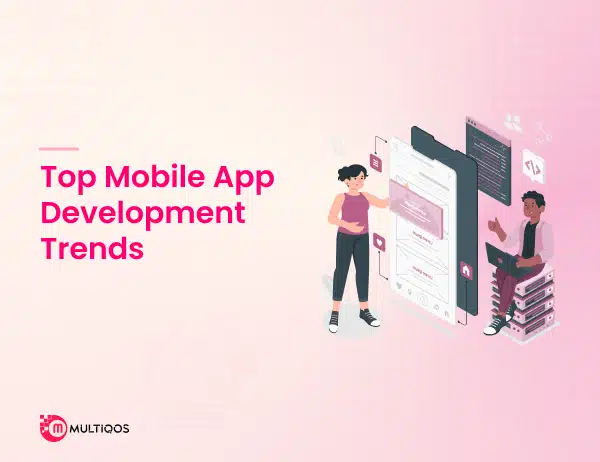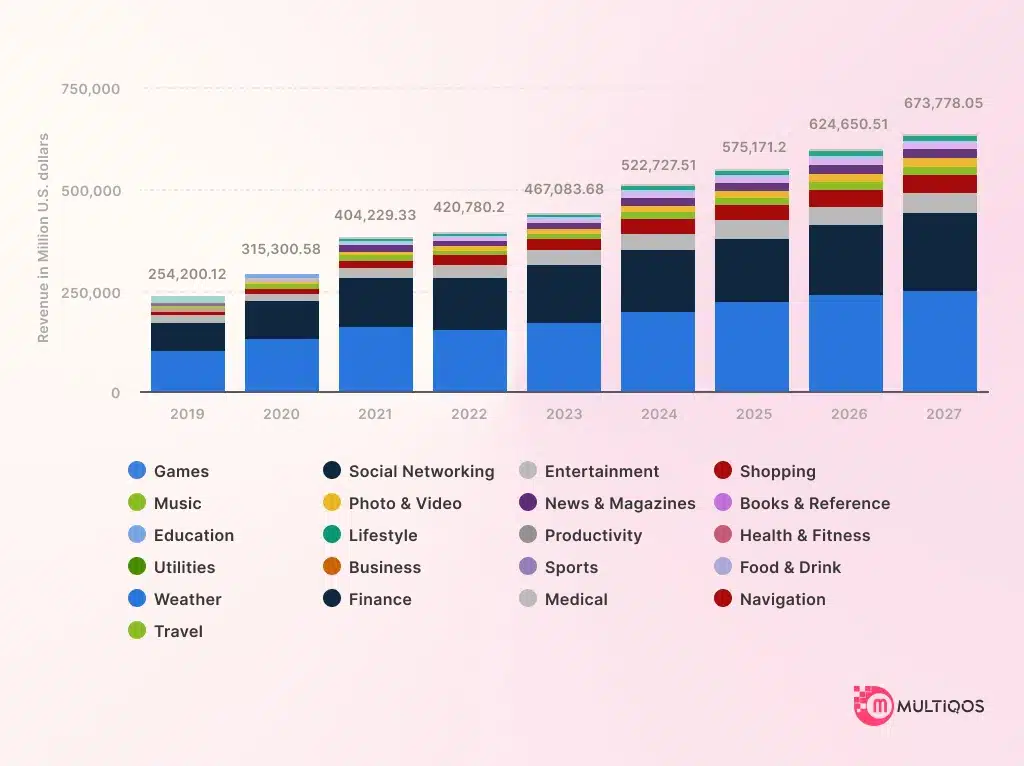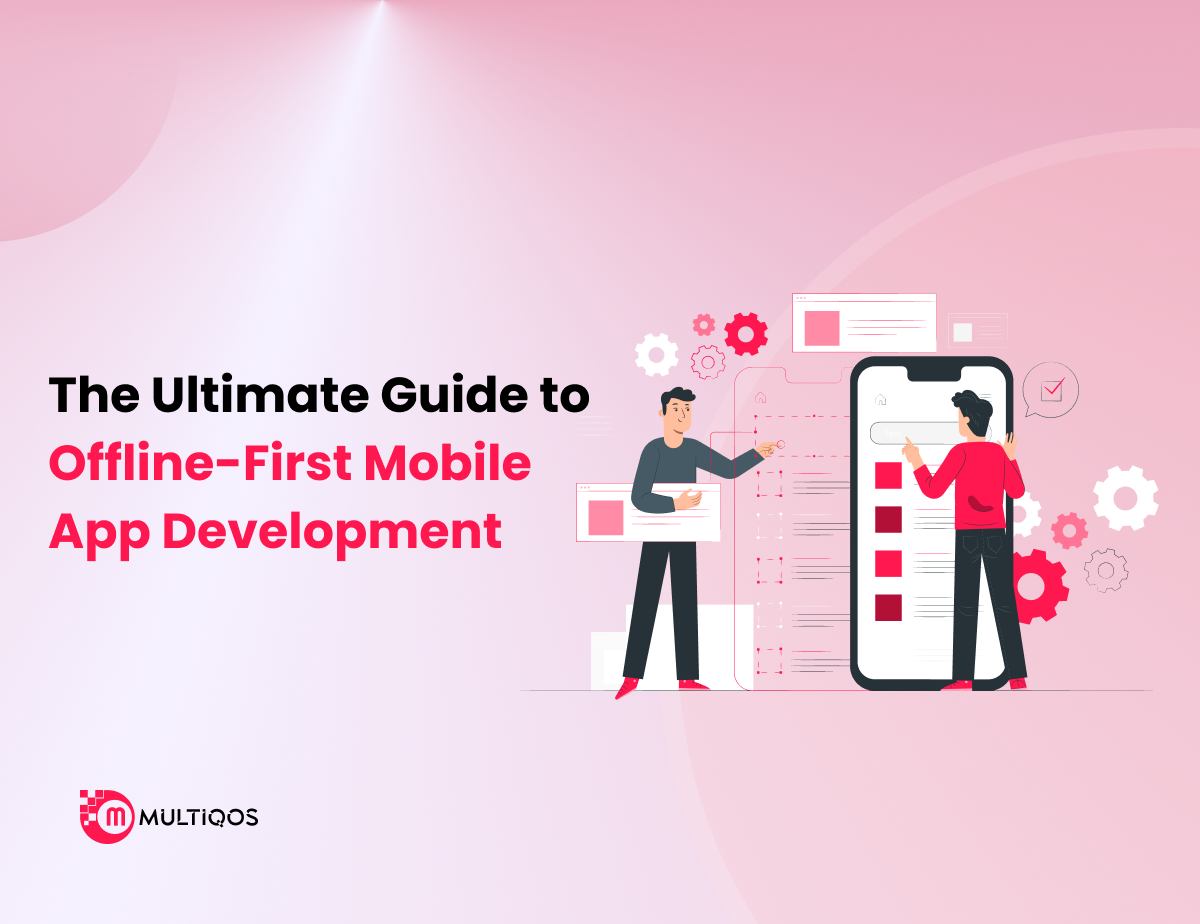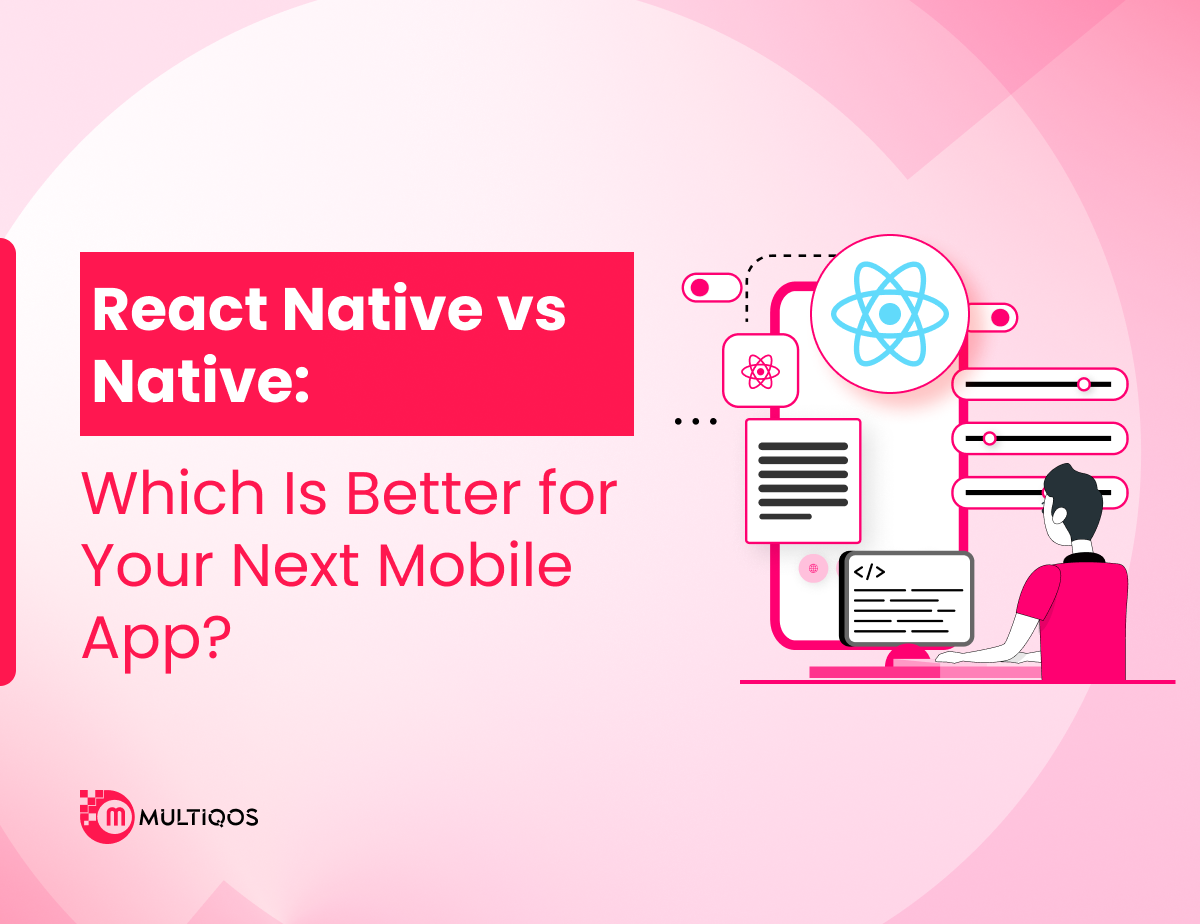Top Mobile App Development Trends to Watch in 2025

Introduction
You are in 2025. You wake up, turn your phone, and suddenly, multiple notifications flood your screen. You wake up and turn your head to look at your phone – and without the necessity to touch it, simply command your phone to start the morning playlist.
Sipping your coffee, the weather forecast is overlaid on the kitchen’s window via an AR application. Your smart home controls the temperature, or you make it do so with the help of a mobile app that’s smarter than ever before.
From plain text messages and basic concepts in gaming to virtual reality, real-time data analytics, and even artificial intelligence that understands us better, as we look ahead to 2025, it will not only be about adding flashy functionalities but also about shaping how we work, learn, and stay healthy.
So, what’s next? What is trending in the mobile app development industry and will the latest trends shape the next wave of innovation? With 5G and AI-integrated apps, Augmented reality, and even Blockchain, the frontier of mobile app development is already expanding.
In this blog, we will have a look at the latest mobile app development trends that you need to consider in 2025 and beyond. These trends will not only transform the way apps function but also redefine our relationship with technology.
Some Facts & Figures About Mobile App Development
1). According to Statista, the App market worldwide is expected to reach a total revenue of US$420.80bn in 2022. This projection indicates a steady growth rate of 8.83% per year (CAGR 2022-2027), resulting in a projected market volume of US$673.80bn by 2027.
2). The AI-driven app market is expected to surpass $126 billion by 2025.
3). According to Research, the average Smartphone user in the US spends 5 hours and 24 minutes on the phone, and in the extreme spectrum, some users tend to use their Smartphones for more than 7 hours.
4). The BYOD market is expected to reach $367 billion by 2025.
5). You’ll be surprised to know that a report says the average American checks their phone around 96 times a day, and around 60% of people sleep with their phones at night.
Top 13 Mobile App Development Trends You Need To Know
The overall market for mobile application development is growing quickly, and the need for mobile app developers to create better and unique apps has been on the rise.
In the year 2025, some of the following developments will emerge that are set to redefine the process of creating and using mobile apps. These trends work in different technologies, including artificial intelligence, 5G, augmented reality, and more.
Below are details of the key 13 mobile app development trends that will dominate the Industry in 2025.
Trend #1. AI and Machine Learning Integration
AI and ML are not only buzzwords, it is important for mobile application development. These technologies enable a form of monitoring of users’ behavior and their needs to deliver focused experiences by the application.
AI is being integrated into apps right down to the basic functions like a content recommendation to higher app functions such as image recognition and distribution, and predictive analysis.
The ML algorithms can incorporate information from continuing users in an app and hence improve the functions of the app over time. In the upcoming year, applications will become smarter through AI/ML development and will be able to make real-time decisions, such as in chatbots, virtual assistants, or health apps that track the health metrics of a user and provide tailored advice.
This trend will improve both, the level of user engagement and operational efficiency.
Trend #2. 5G-Powered Apps
5G technology holds the key to revolutionizing mobile app performance by offering faster download speeds, lower latency, and more reliable connections. With 5G, users can expect faster streaming, seamless video calls, enhanced cloud gaming, and overall smoother real-time experience on applications that require substantial data usage.
Some of the enhanced experiences that can be delivered on 5G mobile applications include; streaming ultra-HD videos, augmented reality, and even Virtual Reality.
The reduced latency and higher bandwidths also enable apps to do more such as AI processing while in use, and real-time video streaming with minimal buffering.
Trend #3. Internet of Things(IoT) Expansion
IoT is about connecting devices over the internet while monitoring these devices is made possible through mobile apps. According to the experts, the demand for IoT is going to increase in 2025 and IoT-mobile apps will become the main control center of several home appliances as well as gadgets related to health.
Common consumer devices extending from smart homes to cameras, lights, and thermostats to smart health devices inclusive of fitness and heart rate tracking devices are expected to depend upon mobile apps for data capture, monitoring, and control in the next five years.
Integrating IoT with mobile apps not only enables seamless management of interconnected and complex systems but also enhances efficiency in real-time.
Trend #4. Cross-Platform Development Framework
The other rapidly emerging trend in mobile app development is cross-platform application development as it allows developers to design apps using a single codebase.
This has a further advantage of reducing the overall development time and costs and yet achieving high performance. Some common and widely used frameworks like Flutter, Xamarin, and React Native are used to build cross-platform apps.
These tools enable a developer to write a code once and be able to deploy it across several platforms, thereby implying that businesses ought to reach out to the largest client base possible without the development of another separate team.
Thus, cross-platform frameworks are particularly effective for startups and small enterprises that are interested in developing an application for iOS and Android at the same time but do not want to overspend.
Trend #5. Augmented Reality and Virtual Reality
AR and VR have been slowly increasing the pace and are becoming popular in app development in such fields as games, shopping, medicine, and learning. AR adds computer information and reality together and VR puts users into a completely digital environment.
With the increase in popularity and capabilities of smartphones, AR and VR are now improving experiences and growing progressively.
According to predictions, in 2025, the use of AR and VR will only increase, and new apps will emerge across various sectors. AR can be applied in applications for retail stores to provide try-on services or to illustrate product interiors in their homes.
VR can improve training simulations in industries like healthcare, enabling experts to practice medical procedures in a controlled virtual environment.
Trend #6. Apps for Foldable Smartphones
These new exciting foldable smartphones are quickly emerging and giving customers flexibility to expand screen sizes for multitasking or media consumption. However, designing native applications that would function seamlessly on both the small screen and larger unfolded screen requires unique design considerations.
In 2025, mobile app developers will pay much attention to designing apps that are optimized for foldable devices to ensure a smooth and seamless transition between screen states.
This includes keeping application user engagement and usability when the device is folded or unfolded, and offering adaptable user interfaces to harness the full potential of the foldable form factor.
Trend #7. Blockchain Integration
Smart mobile applications should harness blockchain development to enhance decentralized and secure technologies that could significantly enhance the reliability, efficiency, and performance of smart mobile applications.
Blockchain integration is a phenomenon that is entering the market and is being implemented in many fields including finance, healthcare, SCM, and real estate. Which, as many developers have noted, lets them securely store and transfer data with no middlemen in between.
Blockchain-integrated mobile apps could provide secure payment, digital assets solutions, and more secure data solutions.
Among the known applications of the blockchain, the most frequently met ones are cryptocurrency apps, DeFi platforms, and supply chain tracking apps.
Trend #8. Cloud-based Mobile Apps
Cloud-based mobile apps are gaining immense popularity since they are capable of storing data remotely and can be easily accessed from anywhere anytime.
With the increasing reliance on cloud solutions, there is no need to store large amounts of data locally, eliminating device storage requirements and enhancing app performance.
Another advantage is that the data can be processed in real-time, as the apps are also scalable and can be updated without disrupting the existing infrastructure.
Through using web-based services such as AWS, Google, or Azure, developers can create and host strong applications that provide a range of features that can be easily adapted to meet the increasing user base.
Trend #9. Voice User Interface and Speech Recognition
Voice commands are one of the fast-growing trends, as more and more users adopt it ranging from Amazon Alexa, Google Assistant, and Apple’s Siri. VUI and speech recognition technologies allow hands-free control and interaction with apps, making them more accessible and convenient for users.
We can expect more mobile apps in the coming year to integrate built-in voice-control features that include search and voice dictation, and voice-activated commands for navigating apps.
As the need for speech recognition continues to advance, it will offer better interaction, which means better satisfaction for the users.
Trend #10. Wearable Technology and Mobile App Interactions
Wearables like smartwatches, fitness trackers, and health monitoring devices are an integral part of the mobile ecosystem. Mobile applications that interact with wearable devices are a new concept through which customers can track their fitness plans, health indicators, and notifications.
In 2025, it is expected to see more app developments to enhance user experience across wearables, enabling deeper integration with smartphones.
Wearable also offer health statistics such as heart rate, sleeping pattern, or steps, thus allowing users to monitor their health status.
Software developers will come up with applications that will integrate with wearables in a way that allows them to feedback on information derived from wearable health monitors together with suggestions and notifications.
Trend #11. Super Apps
Super apps are all-in-one solutions that offer multiple services within a single app, effectively reducing the requirement for users to download several apps.
Some services provided by super apps are e-commerce, social networking, messaging, ride-hailing, and payments. Such trends are already been used by WeChat and Grab, and it is expected to expand in the coming years.
Super apps provide a great user experience as they tie multiple services and enable them to perform various tasks within a single app. For companies, such apps produce great opportunities for user engagement, monetization, and data collection.
Trend #12. App Security and Privacy Enhancements
As mobile apps handle huge amounts of user information, security and privacy have become top priorities for software developers.
In 2025 and beyond, app developers are going to focus even more on using security approaches that will ensure the data collected from users is secure and compliant with regulations such as GDPR and CCPA.
Features such as end-to-end encryption, fingerprint and facial recognition, 2FA, and secure payment links will be part of the usual practice when developing apps.
Furthermore, privacy-conscious users will expect apps to be transparent about data usage and provide more control over their information.
Trend #13. Low-Code/No-Code Development
Low-code and no-code development platforms have gained immense popularity as they empower users with minimal coding experience to create apps.
Such platforms provide drag-and-drop functionality, easy-to-navigate interfaces, and pre-built templates that simplify the mobile app development process.
The low code/ No code platforms will democratize app development for businesses to create apps faster in a cost-effective manner.
This trend will help companies to test ideas frequently, reduce development time, and bring products to the market without relying solely on technical developers.
Why MultiQoS is Your Go-To Partner for Mobile App Development?
MultiQoS is a top mobile app development company that has showcased its great strength in providing quality mobile app solutions to meet your unique project needs.
With a dedicated team of developers, designers, and strategists, MultiQoS creates mobile apps with high-quality performance, ensuring a user-centric app across various industries. We work closely with our clients to ensure that the project is executed with precision and exceeds their expectations.
We focus on keeping up with emerging mobile app development trends, leveraging the latest technologies such as 5G networks, blockchain, and cloud computing to deliver scalable, robust, and secure apps.
Its fast-moving development cycle on top of its emphasis on security and performance makes it the ideal development partner for businesses looking to launch innovative mobile apps.
When you collaborate with us, you are guaranteed to work with a company that is focused on transforming your vision into reality and boosting traffic and revenue.
Key Takeaway
The global mobile app development market is now all set to embrace the latest developments and trends. With trending technologies such as blockchain, AI, 5G, augmented reality, and IoT, the mobile app development industry should stay competitive all the time and follow the upcoming trends.
Users’ expectations are limitless and will evolve, integrating these innovations will be the key to providing interactive, secure, and engaging mobile experiences.
Whether you’re looking to build a next-generation app or expand your digital presence, staying informed about these trends will help you make the best decisions for your business.
If you’re ready to adopt the future of mobile technology, it’s time to hire mobile app developers who possess the potential to create that vision and are well-versed with the latest tech trends.
Frequently Asked Questions
When searching for mobile app developers, companies should consider finding professionals skilled in the latest technologies like artificial intelligence, 5G, augmented/virtual reality, and blockchain. They must be experienced in working with cross-platform frameworks and focus on user experience, security, and performance optimization.
IoT-based mobile apps will become more widespread, enabling users to control and monitor smart devices, wearables, and healthcare devices. This integration will lead to more automated and connected user experiences.
Mobile apps in 2025 will ensure they have excellent security features to protect user’s data and also adhere to the GDPR and CCPA laws such as biometric authentication and end-to-end encryption.
AI integration, IoT, 5G-powered apps, blockchain, and augmented and virtual reality. These trends will push innovation and deliver more personalized, immersive, and secure app experiences.
Get In Touch







